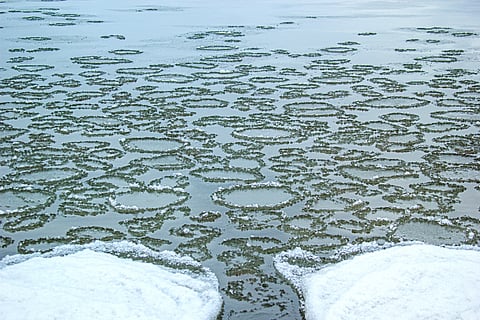

In the deep winter of Canada, something unusual sometimes forms on quiet lakes and slow-moving rivers — giant, perfectly round discs of ice. They appear in places like the Doncaster River in Quebec, the North Saskatchewan River in Alberta, and smaller lakes across British Columbia’s interior. These ice circles look as though someone carved them with a giant compass, but they form entirely on their own.
The phenomenon begins when a thin sheet of young ice breaks away from the surrounding surface. If this happens in a spot with a gentle rotating current — known as an eddy — the free-floating slab starts to spin. As it turns, its rough edges scrape softly against the surrounding ice and water. This slow grinding smooths the slab into an almost perfect circle, much like a spinning potter’s wheel shaping clay.
The rotation continues as long as the current flows beneath it. In some winters, the circle grows wider as more ice freezes onto its rim. In others, it remains a slim, pale disc drifting in quiet circles. The most flawless ones appear during calm, windless nights when the temperature drops fast enough to freeze the surface but slow enough to let the current do its work.
Canada’s cold, steady rivers provide ideal conditions, which is why ice circles often appear here more than anywhere else in the world. What seems like a winter mystery is actually fluid dynamics and freezing temperatures working together — water carving geometry into ice.